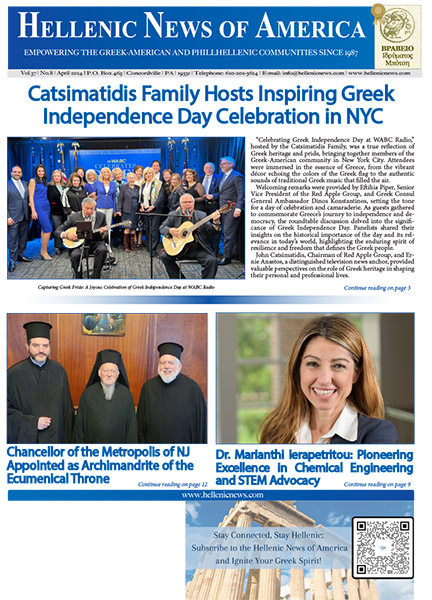When Alexander the Great died in 323 B.C.E., his meteoric conquests had extended the sword of Greece eastward through North Africa, the Middle East, and deep into India. Alexander would not have stopped there but for the rebellion of his weary troops, who feared they would never see their native land again, and by the only opponent who ever defeated him: death.
Probably the only conqueror whose achievements ever rivaled those of Alexander was Genghiz Khan, and Genghiz lived to twice Alexander’s age. It was a more than even bet that Alexander’s empire would not survive his death, and the Greek city-states (who counted themselves among his victims) would try, with some success, to escape the yoke of his legacy. But the empire did not fall apart; it split into three among Alexander’s generals. Their ability to hold it together in this form—and the inability of any one of them to eliminate his competitors—meant that what Alexander had built would last into the next century and beyond, if not exactly in the form he had left it. This would have been impossible without Alexander himself. What is finally remarkable about him is not only his ability to conquer kingdom after kingdom, region after region, but his success at consolidating his conquests through political construction and cultural dissemination. Alexander brought with him his gods, his laws, and the learning of his great teacher, Aristotle. He brought, too, his own personal vision of a universal human community united under the moral and aesthetic precepts of Greek culture. Genghiz Khan, a nomadic tribal chieftain, had no such gifts to bear. He borrowed instead the culture and institutions of those he conquered, loosely if brutally governed, and when the great Mongol empire receded, it left few palpable traces behind and little cultural legacy.
Alexander’s empire coincided with the slow rise of another great imperium, that of Rome. Rome would ultimately conquer most of what Alexander had possessed, and much of Europe besides, and its rule, politically, would prove far more enduring. But Greece itself, though subject to Rome, would conquer its own master culturally. Its gods would become those of Rome; its philosophy was Rome’s; and its art. Nor was this true merely in Rome itself. Thanks to Alexander, Greek ways were already dispersed over the tracks in which Roman legions would follow, far into Africa and Central Asia.
This is nowhere more apparent than in the art of “Hellenistic” times, which of course extended culturally far beyond the final end of Greek resistance to Roman rule in 146 B.C.E. and well into our Common Era. The columns and facades of the public buildings of the great Western capitals, including our own, all bear the Greek stamp, extended and modified by Roman and Renaissance architects but still essentially at one with the Greek monuments of antiquity. The West, in its inner essentials, is Greek.
Buildings don’t travel, of course, and their architecture is subsumed by their functions; one must take thought before entering our halls of power and commerce to be conscious of the aesthetic and ultimately spiritual principles they express. Works of art do travel, though they too surrender some of their context in doing so. The most difficult works to transport are the ones that carry with them the deepest charge of that context because of the space they claim and define when exhibited. These are sculptures. Marble sculptures rarely travel, except in the unsatisfactory form of reproduction. But bronze can travel, and it was the happy thought of the sponsors and curators of Power and Pathos: Bronze Sculpture of the Hellenistic World, to arrange the once-in-a-lifetime exhibit recently on display at Los Angeles’ Getty Museum.
Our prejudice in favor of marble, at least where sculpture up to the nineteenth century is concerned, has led us to scant the virtues of bronze, which include not only durability but plasticity and expressiveness. The Hellenistic emphasis on individualized expression—what we would rather crudely call “realism”—made bronze an ideal medium, and its masterpieces do indeed carry with them both the power of their realization and the poignancy of looking at figures who could easily stand among us today. The most famous of these is the Seated Boxer, which dates from the early third century B.C.E. and was the centerpiece of the Getty exhibit. The subject is an exhausted fighter who sits, greaved forearms and hands resting on his left leg while his head tilts upward and to the right. He may be turned toward something that has suddenly caught his attention, or may be merely trying to unknot the tension in his neck and upper torso; or both. It is a moment caught on the wing, of personal exposure and of a human weariness that goes beyond the bone, yet combined with a still-potent strength. The man is no longer young; his face bears the marks of recent combat—perhaps he is only resting between bouts—and the folds of his neck follow the twist of his head. But he neither courts nor accepts our pity, and the space around him is charged and dangerous: you would enter it uninvited at your peril. He is a man who has accepted his fate, and is living it. He stands not only for the men of his profession, but for the unnumbered millions behind and ahead of him who make their living by toil and physical exertion, whether in an arena or behind a plow. And he was even tougher in the event than he looks to us now, for his figure survived many centuries of entombment before being excavated on Rome’s Quirinal Hill in 1885.
Many of the bronzes in the exhibit had similar stories, including those rescued from the bottom of the sea. Their survival and recovery is part of the glamour that surrounds them, the sense of their luck in surviving to be with us today. All the figures in the show indeed have their stories, as for example the imposing and wonderfully expressive statue of Athena known as the Minerva of Arezzo, discovered beneath the Church of San Lorenzo in 1541 and speedily acquired by the Medici; or the so-called Arundel Head, supposedly found in a well at Smyrna, which some speculate was a depiction of Homer. Among those found at sea is the full-size depiction of a woman recovered off Kalymnos, her body and hair fully covered in superbly rendered drapery and her features alone visible, along with the protruding fingers of the left hand that clasps the folds of her tunic, and her upraised right one: is it held up in blessing, or as a cautionary warning of some sort? The statue keeps its secret, and so its mystery for us. Bronze is tenacious.
There is wit and tenderness as well as assertion in these statues, particularly in the figures of children, and in fact the entire human gamut was covered here from extreme youth to advanced age. Gods and rulers have pride of place, of course, but Hellenistic sculptors exhibited a vast range and sympathy for the entirety of the human condition. Emperors make their triumphal gestures, but a seated youth, too, concentrates carefully on pulling a thorn from the foot of his crossed left leg. We’re invited to look at him, as we are at the seated boxer, in the kind of candid camera pose that would only become familiar to us in the age of photography; and yet he too is guarded by the kind of sacred space that great sculpture creates around itself.
Bronze is an alloy. So are we. Time works on us both, but great art spares us. Power and Pathos was a show that encompassed many centuries, but also spans the present and the eternal. Still, its most signal impression is how far the Greek vision of humanity traveled, how long it has lasted, and how much a model and an ideal it remains for us today. There was a piece in the show from south Yemen, at the very southwest tip of the Arabian Peninsula. Islam is there now—a particularly unhappy and contested form of it—but Greece was there before, and there some part of the Greek spirit remains.
The Getty exhibit closed at the end of October, but, for those who missed it, the Getty has put out a splendid catalogue edited by Jens M. Daehner and Kenneth Lapatin. Maybe someone can make a gift of it to Chancellor Merkel, so that she can see where Europe came from in the first place, and what the best of it still represents.






